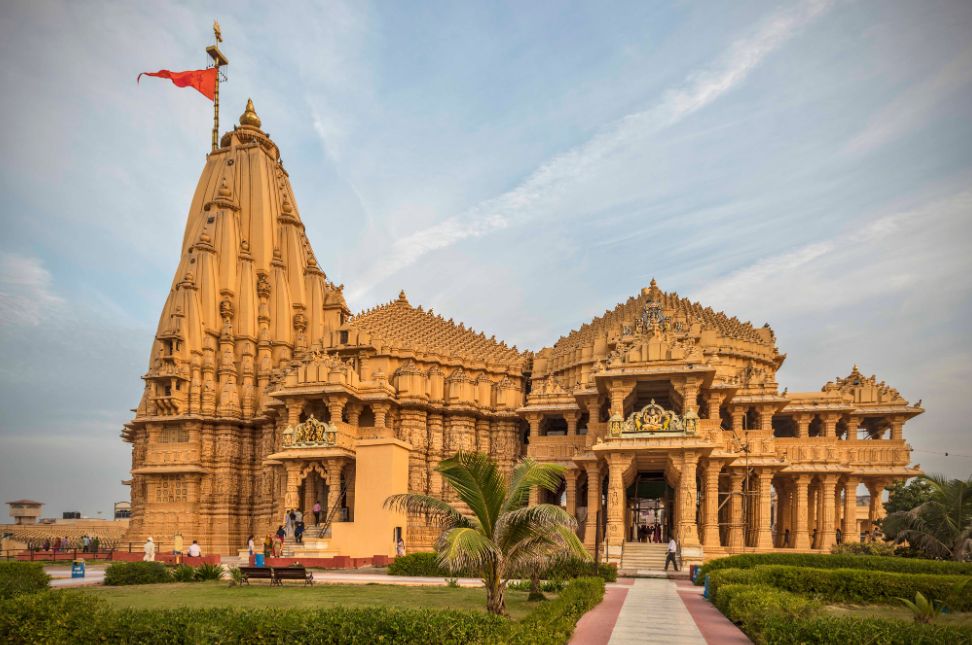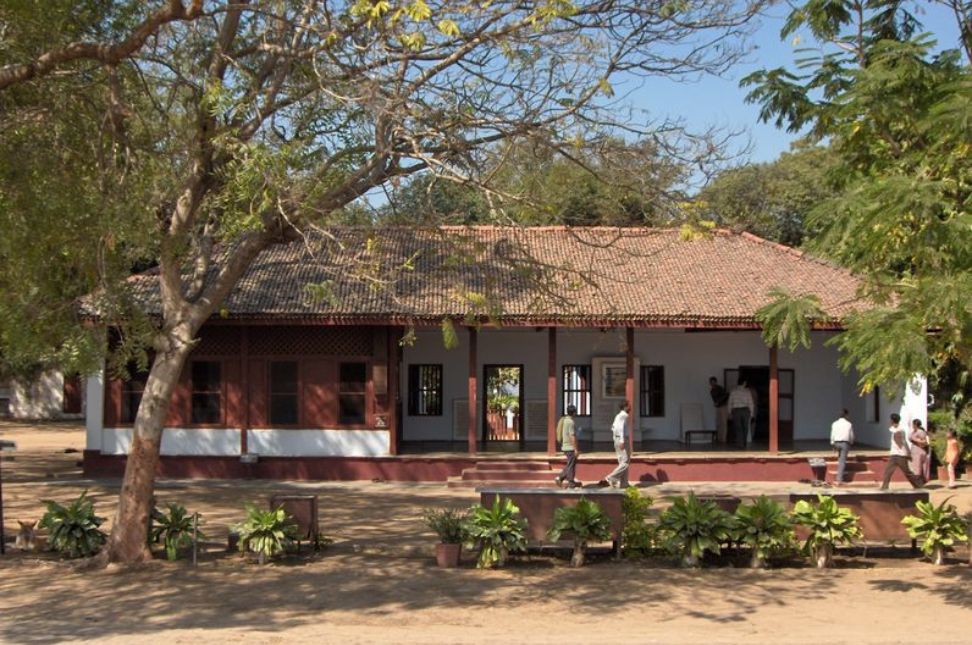The Somnath Temple is one of the most significant and revered temples in India. Located on the western coast of Gujarat, it is one of the twelve Jyotirlingas, making it a vital pilgrimage site for Hindus. The temple stands tall, symbolizing resilience and faith, having been rebuilt multiple times after invasions and natural disasters. The Somnath Temple is not only a spiritual haven but also an architectural marvel that attracts visitors from across the globe.
A Glimpse into the History of Somnath Temple
The Somnath Temple boasts a rich and turbulent history. It is believed to have been originally constructed by the Moon God, Som, hence the name “Somnath,” meaning “Protector of the Moon.” Historical records suggest that the temple has been destroyed and rebuilt at least six times over the centuries. This constant cycle of destruction and reconstruction highlights the resilience and deep faith of the people devoted to this sacred site.
The temple was first destroyed by Mahmud of Ghazni in 1026 CE, who plundered the wealth and treasures housed within the temple. Subsequent invasions by various rulers saw similar acts of destruction. However, the temple has always been restored, often with greater grandeur than before. The current structure of the Somnath Temple was built in 1951 under the leadership of Sardar Vallabhbhai Patel, India’s first Deputy Prime Minister, and is a fine example of Chalukyan architecture.
The Architectural Beauty of Somnath Temple
The Somnath Temple stands as an architectural wonder. Constructed in the Chalukya style, the temple’s design reflects the artistry of India’s ancient builders. The temple is made of yellow sandstone and features intricate carvings on its walls and pillars. The Shikhara (spire) of the temple rises to an impressive height of 155 feet, and atop it sits a large Kalash (pot) weighing around 10 tons.
The temple’s architecture is not only a visual delight but also steeped in spiritual symbolism. The Mandapa (assembly hall) and the Garbhagriha (inner sanctum) are designed to create an atmosphere of peace and devotion. Inside the sanctum, the Jyotirlinga, a symbol of Lord Shiva, emits a divine aura, making it a deeply spiritual experience for devotees and visitors alike.
The location of the Somnath Temple is also significant. Situated by the Arabian Sea, the temple offers a stunning view of the endless ocean. A famous inscription on the temple’s sea-facing wall declares that there is no land between Somnath and the South Pole, emphasizing the temple’s unique geographical position.
The Spiritual Significance of the Jyotirlinga
The Somnath Temple is one of the twelve Jyotirlingas, sacred shrines dedicated to Lord Shiva, where he is believed to manifest as a column of light. Each Jyotirlinga is considered a highly revered pilgrimage destination for devotees of Shiva. The legend surrounding the temple speaks of the Moon God, Som, who was cursed by his father-in-law Daksha to lose his brightness. To regain his light, Som worshipped Lord Shiva at this site, and his prayers were answered. Thus, the temple came to be known as Somnath, the protector of the Moon.
Pilgrims believe that visiting the Somnath Temple and offering prayers to the Jyotirlinga can bring immense blessings, including spiritual enlightenment and liberation from sins. This makes it a prominent destination for religious travelers seeking divine intervention and inner peace.
Festivals and Celebrations at Somnath Temple
The Somnath Temple is not only a site of daily worship but also a venue for grand celebrations during major Hindu festivals. Maha Shivratri is the most significant festival celebrated here, drawing thousands of devotees from across the country. The festival marks the marriage of Lord Shiva and Goddess Parvati and is observed with great fervor. The temple is adorned with lights, flowers, and traditional decorations, while devotees fast, pray, and participate in special rituals.

Other festivals like Kartik Purnima, Holi, and Diwali are also celebrated at the Somnath Temple. During these times, the temple becomes a hub of spiritual and cultural activity, with events such as bhajans (devotional songs), discourses, and folk performances being held in the temple precincts.
Exploring the Surrounding Areas of Somnath
While the Somnath Temple itself is the main attraction, the surrounding areas offer plenty of other sites worth exploring. The town of Somnath is dotted with temples, beaches, and historical landmarks that complement the spiritual experience of visiting the temple.
- Bhalka Tirth: This is another important religious site located just a few kilometers from the Somnath Temple. It is believed to be the place where Lord Krishna was mistakenly shot by a hunter, leading to his departure from the earth. The site has a temple dedicated to Lord Krishna and is a peaceful place for reflection and worship.
- Triveni Sangam: The confluence of three rivers—Hiran, Kapila, and Saraswati—is considered a sacred spot near Somnath. It is believed that a dip in these waters can purify the soul and wash away sins. The site also features several smaller temples and is a popular place for devotees to perform rituals and ceremonies.
- Somnath Beach: After visiting the Somnath Temple, tourists can unwind at Somnath Beach, located nearby. The beach offers a serene environment where visitors can relax while enjoying the view of the Arabian Sea. The beach is known for its stunning sunsets and tranquil atmosphere.
- Gir National Park: For those interested in wildlife, Gir National Park, home to the Asiatic lions, is located around 40 kilometers from Somnath. A visit to Gir offers a contrasting experience of Gujarat’s natural beauty, from the spiritual calm of Somnath to the wild landscapes of the Gir forests.
How to Reach Somnath Temple
The Somnath Temple is well-connected by air, rail, and road, making it accessible for visitors from all over India and beyond.
- By Air: The nearest airport to Somnath is Diu, which is approximately 85 kilometers away. Diu Airport offers regular flights from cities like Mumbai. From the airport, visitors can hire taxis or take buses to reach the Somnath Temple.
- By Rail: Veraval is the closest railway station, located just 7 kilometers from Somnath. Veraval has good connectivity with major cities like Ahmedabad, Rajkot, and Mumbai. Taxis and auto-rickshaws are readily available from the station to reach the temple.
- By Road: Somnath is well-connected by road, and buses are available from nearby cities such as Ahmedabad, Rajkot, and Junagadh. Private taxis and rental cars are also a convenient option for reaching Somnath by road.
Best Time to Visit Somnath Temple
The best time to visit the Somnath Temple is between November and February when the weather is pleasant and cool. This is also the time when the temple witnesses a surge in visitors, particularly during the festival of Maha Shivratri. Summers in Gujarat can be scorching, making it less ideal for sightseeing. The monsoon season, from June to September, brings moderate rainfall, which adds a different charm to the coastal temple but may hinder travel plans.
Conclusion
The Somnath Temple is a timeless symbol of devotion, resilience, and architectural brilliance. It stands as one of the most important pilgrimage sites in India, attracting devotees, historians, and tourists alike. Whether you are visiting for spiritual fulfillment, historical curiosity, or architectural admiration, the Somnath Temple offers an experience that is both deeply personal and universally inspiring.
The temple’s location by the Arabian Sea, its rich history, and its spiritual significance make it a must-visit destination in Gujarat. From the serenity of the Jyotirlinga to the cultural vibrancy of the festivals, the Somnath Temple offers a profound and enriching experience for every visitor.




